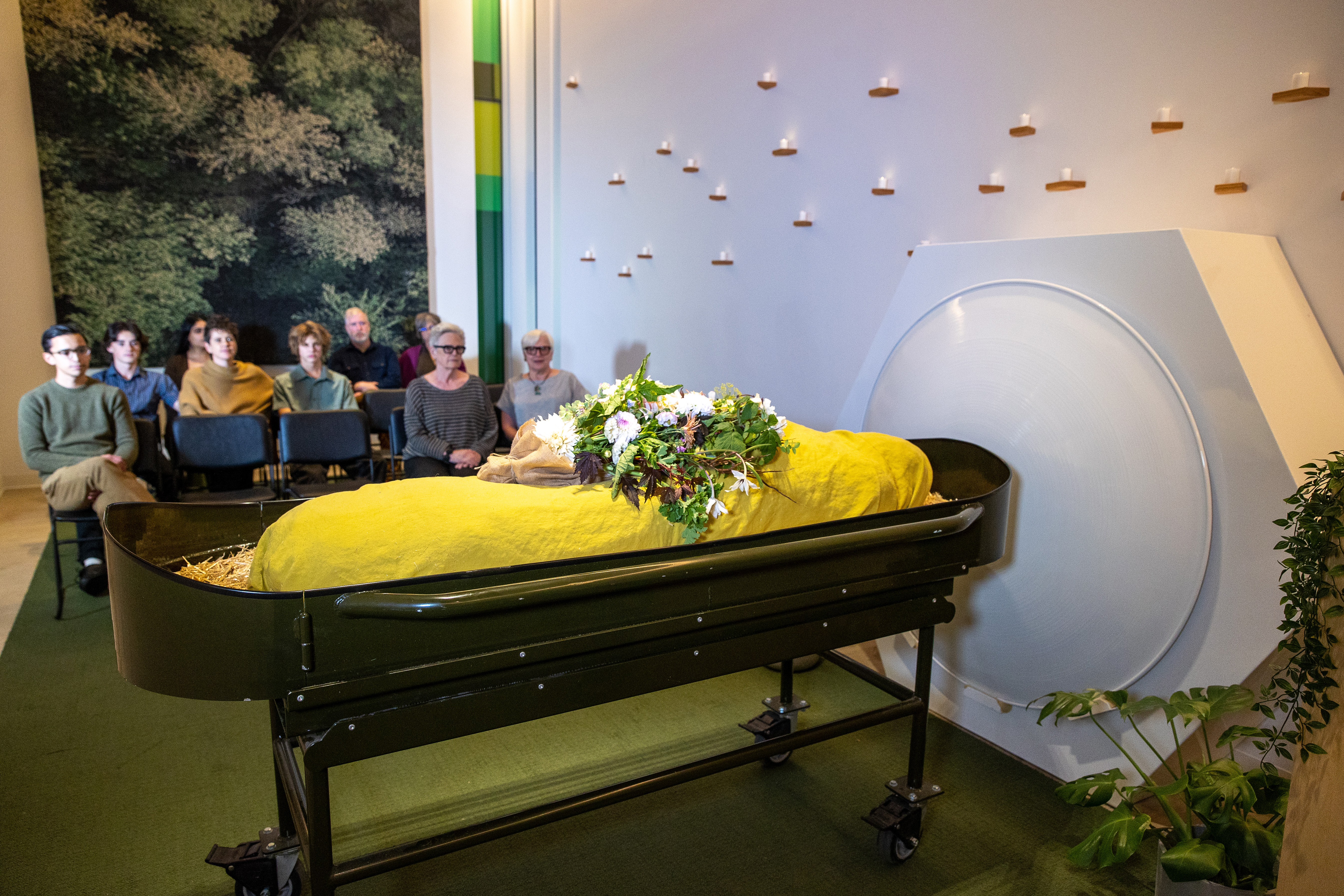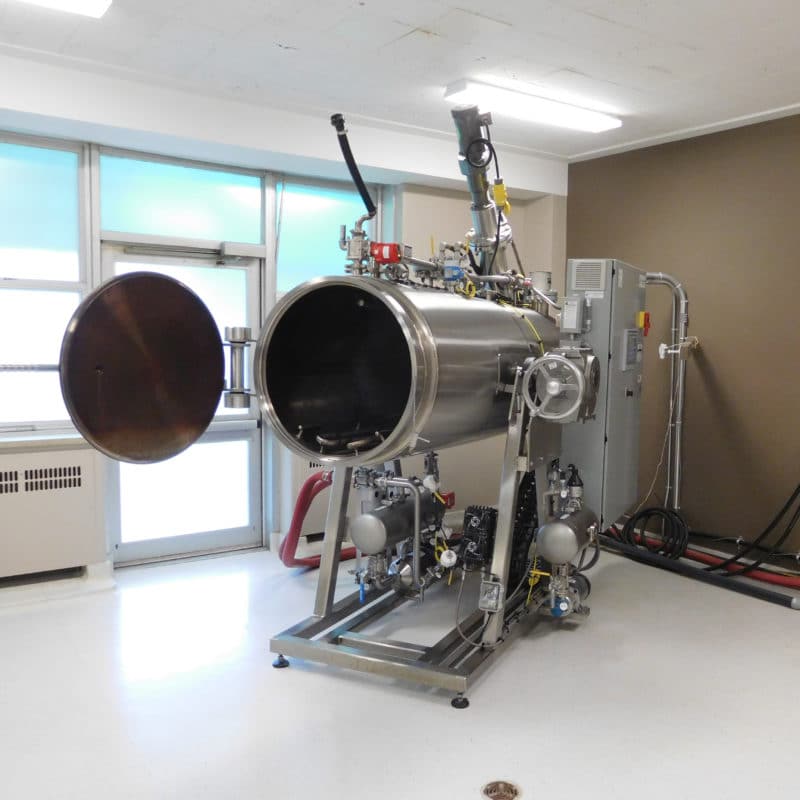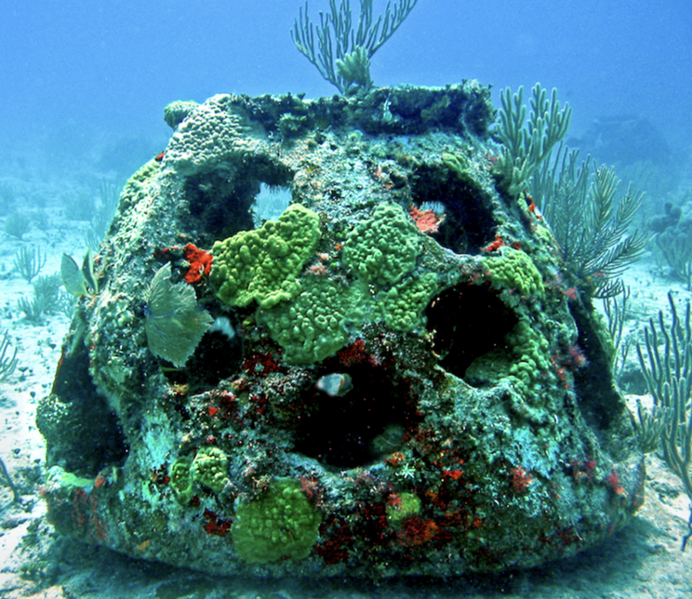Alternative funeral options are changing how we honor our dead

This article is an installment of Future Explored, a weekly guide to world-changing technology. You can get stories like this one straight to your inbox every Thursday morning by subscribing here.
When someone dies in the US, the vast majority of the time, their body is either embalmed, placed in a coffin, and buried in a cemetery, or cremated and the ashes returned to their loved ones in an urn — but those aren’t the only options.
A growing number of funeral directors, startups, and nonprofits are providing people with alternative ways to have their bodies honored after death — suggesting that the funeral landscape of tomorrow won’t be so binary.
Human composting
Traditional burial and cremation has a cost for the environment, releasing chemicals into the ground or greenhouse gasses into the air, but a number of other funeral options are showing that death can be green.
One of the fastest growing of those is human composting.

Also known as “terramation,” human composting starts with the placement of the body in a sealed container with biodegradable material, such as straw or wood chips. Microbes in the body break down the remains, turning them into a nutrient-rich soil in about 1 to 2 months.
The process generates about 1 cubic yard of soil, and after it is dried for about a month, it can be donated to conservation land or returned to the deceased’s survivors, who might opt to use it in a garden or to plant a new tree.
In 2019, Washington became the first state to legalize human composting, and so far, the process is now legal in six states. As for cost, only a few companies currently offer the service, and they charge between $5,000 and $7,000.
Water cremation
Water cremation, also known as “alkaline hydrolysis,” is another funeral option focused on environmental sustainability.
Like human composting, it starts with placing the body in a container. A mixture of water and alkaline chemicals (usually potassium hydroxide) is then pumped into the container and heated, which breaks down the body.

Three to 16 hours later, the only things left in the container are bones and a sterile liquid that includes amino acids, sugars, and soap. The liquid is disposed of, while the bones are dried, ground into a powder, and returned to the deceased’s survivors.
Water cremation is legal in 28 states and costs about $2,000 to $3,000. That’s about the same price as traditional cremation, but alkaline hydrolysis requires only 10% as much energy. (Traditional cremation emits about as much CO2 as a 500-mile car ride.)
Green burial
During embalming, the body is treated with chemicals that slow decomposition. This can give loved ones time to have a viewing prior to burial, which can help mourners grieve.
When you add up all the bodies buried in the US alone, you get 800,000 gallons of embalming fluid being put into the ground every year, and studies have shown that at least some cancer-causing chemicals in the fluid can make their way into nearby ground.
For those who like the idea of returning to the ground, but not the leaching of chemicals into the environment, there are a number of “green” burial options.

The simplest version of a green burial is to be wrapped in a shroud made of a biodegradable fabric and then placed directly into a grave about 3 to 4 feet deep. This depth allows for greater oxygen flow than the traditional six feet under, which helps accelerate decomposition.
For those who prefer starting their journey back to the Earth inside a casket, there are eco-friendly, biodegradable options, including ones made of wicker, bamboo, and even mushroom fibers.
It may be possible to be buried on private property, but if that’s not legal where you live, you’ll need to find a green cemetery. That’s getting easier, as the number of places that allow green burials in the US and Canada has risen from about 280 in 2020 to more than 380 in 2023.
Ashes to…
Not all alternative funeral options are based around the idea of minimizing the environmental impact of burial or cremation. Sometimes, survivors are just looking for a better way to honor those who’ve passed, and often this is done by turning their cremated ashes into something meaningful.
Florida-based charity Eternal Reefs will mix the ashes with cement and then use the mixture to form a “reef ball” — once sunk to the ocean floor, the ball provides a home for coral and other marine life.

Several companies will incorporate ashes into fireworks that could be used in a celebration of the deceased’s life, and at least one — And Vinyly in the UK — will press them into vinyl records that can play the favorite songs of the person who’s passed or even clips of them speaking.
To give you a way to keep your loved ones close by, countless companies will turn cremation ashes into jewelry, but if you really want to make sure the deceased is always with you, you can have some of their ashes mixed into the ink before getting a ritual tattoo.
Texas-based company Celestis, meanwhile, will help you send your loved one’s ashes to space — “Star Trek” creator Gene Roddenberry and NASA scientist Eugene Shoemaker are two of several notable figures to have had their ashes included on Celestis spaceflights.
The big picture
The US funeral industry is clearly experiencing a major transition — today, more than half of Americans are cremated when they pass, compared to less than 4% in 1960, largely because of the financial and environmental cost of traditional burials.
If the green funeral options above can overcome the regulatory red tape preventing them from being available across the nation, we could start to see cremation replaced by even more sustainable options — allowing us to honor our dead without inflicting unnecessary damage on the planet they called home.
We’d love to hear from you! If you have a comment about this article or if you have a tip for a future Freethink story, please email us at [email protected].



















